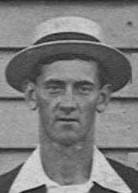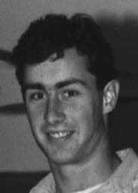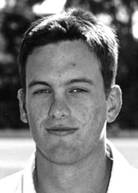One of the oldest clubs on the Central Coast, the Narara Cricket Club is believed to have been first formed around 1880. No records of their matches from this time have survived and the club disbanded sometime in the mid or late 1890s. The present club was formed in February 1898 and, with the exception of one season during each of the two World Wars, has competed continuously ever since.
In its early years the Narara team was made up almost entirely of members of the pioneering Gavenlock family. Two of them, cousins Jack and Chris (or Kick) Gavenlock, were outstanding cricketers both capable, according to contemporary sources, of playing first class cricket had they chosen to join Sydney clubs.
Another great cricketer of that era, the legendary Paddy Clifton, joined Narara in 1901, married into the Gavenlock family, and captained the team from about 1906 until 1921. The Gavenlock influence at the Narara Cricket Club has continued now for almost 100 years. Indeed, at least one member of the family has played for the club every season from 1898/99 to 1994/95. At least nine Gavenlock descendants (Arthur, Vern and Wal Clifton, Barry and John Olsen, Alan and Peter Davidson, and Mick Birt) play first grade cricket in Sydney, whilst Alan Davidson went on to become one of Australia's greatest all-rounders. With the exception of Vern Clifton and Alan Davidson, all, at some time, played for Narara.
Prior to the 1912/13 season cricket on the Central Coast was organised on an informal basis with clubs arranging matches between each other from week to week. In a search for more serious competition Narara applied for entry, firstly into the Sydney grade competition and, when they were rejected, into the Newcastle District competition. They were eventually accepted into the latter for the 1911/12 season, but only on the condition that they play all their matches in Newcastle. This they did, and with a team strengthened by several players from other local clubs, won the competition at their first attempt, defeating Wickham in the Final. The star of the match was ex-Jilliby player, Arthur Brown, who scored 243 not out, still the highest individual score in the history of the Newcastle District Cricket Association.
Although Narara returned to defend its title the following season the constant travelling took its toll and a decline in playing strength left the team far less competitive.
That same season (1912/13) also saw the formation of the Wyong District Cricket Association (WDCA). Narara joined the competition in 1913/14 and remained there until 1920/21, reaching the Final several times, only to be beaten on each occasion by the powerful Yarramalong XI.
In 1920 the Gosford District Cricket Association (GDCA) was formed and the following season (1921/22) Narara transferred into that competition. Despite the loss of Paddy Clifton to the newly-formed Lisarow club, Narara grew in strength during the 1920s, winning their first premiership (Second Grade) in 1922/23. By the mid-1920s they had sufficient quality players to field two First Grade teams, known as Narara 'A' and Narara 'B'. In 1926/27, upset at being considered the No 2 team, members of the 'B' team formed a breakaway club which for several seasons competed as Wyoming. On at least one occasion they finished ahead of the 'A' team.
1926/27 also saw the record books re-written when, against Lisarow at Victoria Park, the Narara First Grade team scored 5 for 506 declared, with Jack Gavenlock, who opened the batting, remaining not out on 255. It was the highest individual score in the district at that time (since passed only once - Doug Fagan's 262 not out in 1939) and remains the highest score by a Narara player. As well as being a fine cricketer, Jack Gavenlock was also an outstanding administrator, being secretary of both the Narara club and the GDCA for more than 20 years.
In the early 1930s Arthur Clifton, the oldest of Paddy Clifton's four sons, re-joined Narara, having played for the club as a boy before following his father to Lisarow. There he became the only player to perform the amazing double of 1000 runs and 100 wickets in a season. He came to Narara after several seasons with Northen Districts in the Sydney First Grade Competition.
When the GDCA competition resumed after the Second World War, Narara's playing strength was severely depleted and during the 1950s they generally were unable to field a first grade team, although they were able to win several lower grade premierships.
Another Gavenlock descendant, Ron Olsen, whose playing career spanned four decades (from 1932 to 1965), was the club's leading spin bowler during this era. As secretary he was one of the driving forces behind the construction, in 1958/59, of the club's new turf wicket at what is now Alan Davidson Park. Only the second turf wicket in the district at that time it was laid almost entirely by volunteer labour, and was an important factor in Narara's eventual re-emergence as a cricket force.
That re-emergence came in the 1964/65 season when the club was reinforced by the arrival of a number of quality cricketers. Fifty three years after Paddy Clifton had led Narara to the 1911/12 Newcastle premiership his grandson, Peter Davidson, captained the team to a win against The Entrance in a low-scoring final at Grahame Park. Davidson, a former Sydney first grade player, led from the front scoring 913 runs at an average of 48.0.
For the remainder of the 1960s and throughout the 70s Narara dominated the local competition, winning ten first grade premierships in 15 seasons. The blend of the good young players such as Barry Olsen, John Olsen and Ted Albury who had developed under the coaching of Ron Olsen, and experienced players such as Peter and John Davidson, Dave Smallman, Wally Clifton and Mick Birt formed a team which was close to unbeatable. Importantly for the club, as these great players gradually retired or dropped down the grade they played an integral part in the development of their successors. Players like Geoff and Greg Smith, Greg Davidson, John Liddle and Glenn Rowlands learnt their cricket in teams coached and captained by these outstanding cricketers.
From the early 1980s although the Narara first grade team remained competitive the former dominance had gone. The 1984/85 title, won under the captaincy of Greg Smith, was to be Narara's last until the present day although the club continued to win lower grade premierships.
While other clubs imported former Sydney players to bolster their teams Narara continued to develop and provide opportunities to its juniors. Players like Troy Marchant, Ashley Shoobridge, Andrew Sainsbury and Aaron O'Brien all played first grade by their mid-teens. Marchant, Shoobridge and O’Brien all won selection in NSW Under 17 teams, with Shoobridge and O’Brien also making the Australian U/17 team, and O’Brien representing Australia in the 1999 Youth (U/19) World Cup in Sri Lanka.
An indication of the club’s success as a nursery of high quality cricketers was indicated, when in the latter half of the 1999/2000 season, four former Narara players were playing in Sydney first grade teams: Shoobridge for North Sydney, Sainsbury, O’Brien and Steven Coombes all with Northern District.
The outstanding individual achievement by a player from the Narara-Wyoming Cricket Club came early in the 1998/99 season when Andrew Sainsbury was selected in the NSW Sheffield Shield team which played Queensland at Manuka Oval, Canberra in late October 1998. Batting at number four he went to the wicket with the score at 2-2 and top scored with 72 from a NSW total of just 159. In the second innings he was run out for 18 and retained his place for the next three matches but failed to make any score of note. Although he has consistently scored heavily for Northern District and has remained in the NSW squad until the present time he has not been recalled. |

Jack Gavenlock

Peter Davidson

Andrew Sainsbury

Aaron O'Brien |

